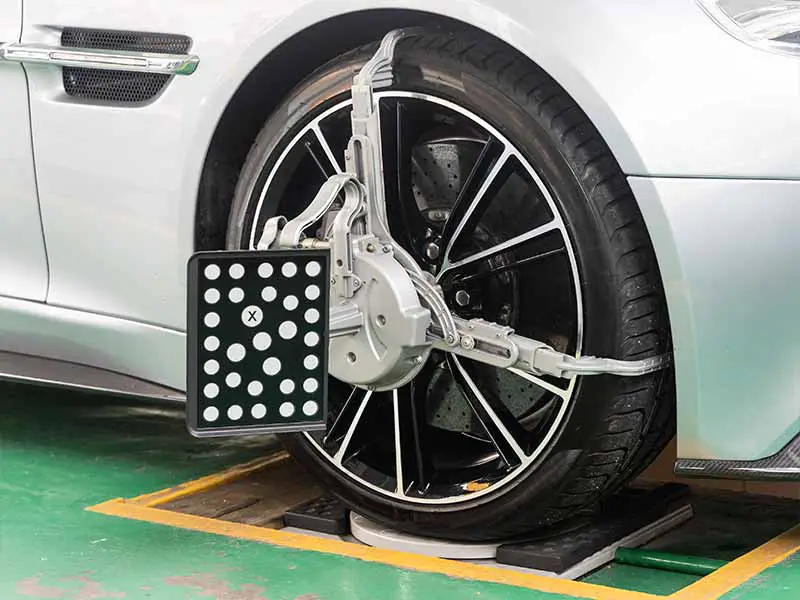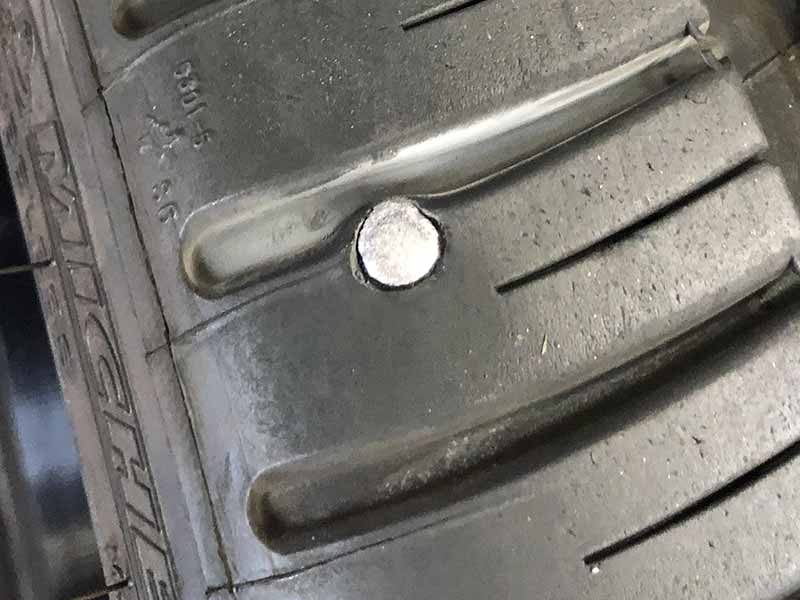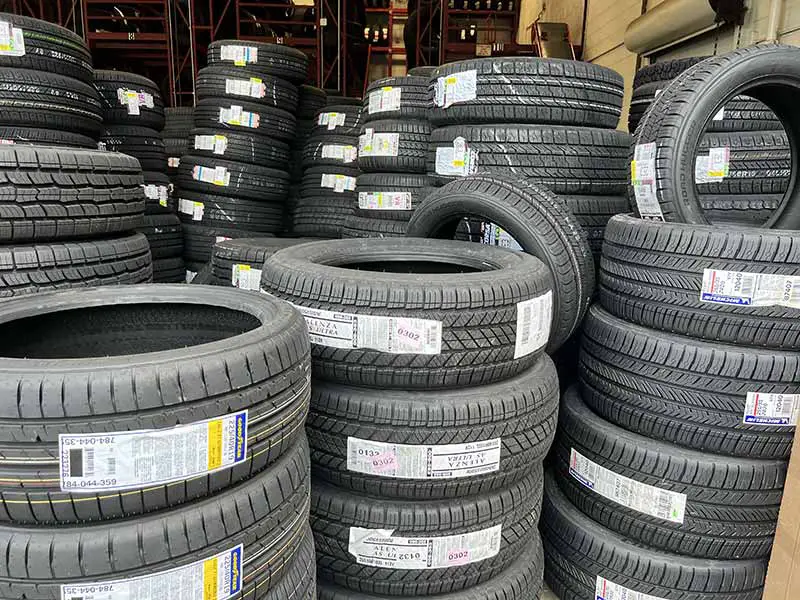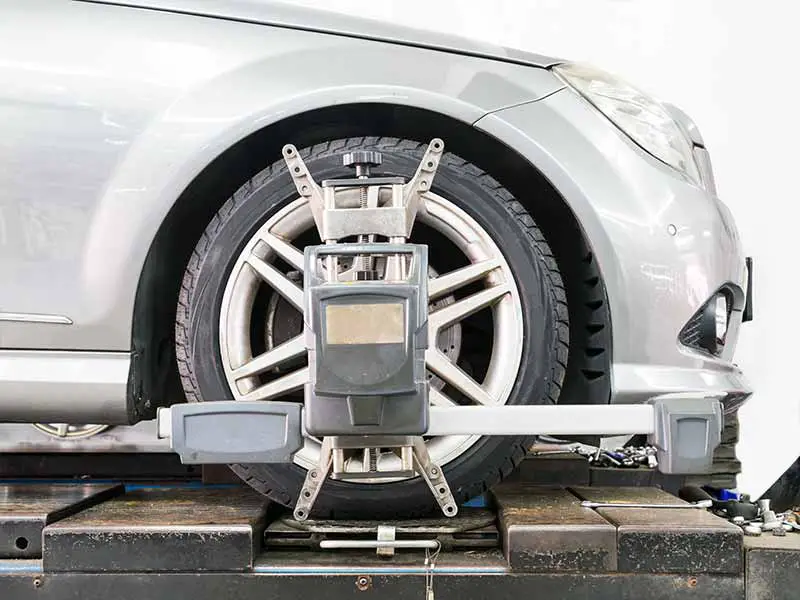Tires are expensive and getting the most performance out of them while making them last is important. But is the added expense of proper wheel alignment really necessary? And if so, when’s the best time to get it done?
Do I Need An Alignment After Replacing Tires?
A wheel alignment isn’t technically necessary but is strongly recommended when replacing tires. This is especially true if you haven’t had this service performed within the last 10,000 miles.
In this article, we’ll cover the different factors that determine whether you need an alignment after new tires, like what kind of tires you got, how many you replaced, and why.
Let’s take a closer look.

Bad Alignment Symptoms
So, you’re cruising down the road, and suddenly you feel your car pulling to one side. Or, you’ve noticed that your steering wheel is off-center. These are just a few tell-tale signs that your vehicle’s alignment is off.
Poor alignment can cause many problems, including uneven tire wear, reduced gas mileage, and even difficulty controlling the vehicle in emergency situations. If you notice any of these symptoms, it’s time to get your car or truck checked by a professional.
Should I Get New Tires Or An Alignment First?
So you’re faced with a problem: new tires or an alignment first? The answer depends on why you’re getting new tires and the current condition of your wheels. If you’re getting new tires because your old ones are worn out, and you’re experiencing a pull to one side, an alignment should be first on your list. An alignment will ensure that your new tires make proper contact with the road and help prolong their lifespan.
On the other hand, if your new tires are necessary because of a puncture or a damaged sidewall, an alignment might not be needed right away. However, it’s always a good idea to check your alignment after any major tire work just to be sure everything is good to go.

In short, if you’re getting new tires to fix a driving issue or to replace worn-out tires, an alignment should be done first. But if you’re just getting new tires because of a flat or a damaged sidewall, you can hold off on the alignment for a bit, but don’t forget to have it checked eventually.
How Soon Should I Get An Alignment After New Tires?
The short answer is: as soon as possible. The longer you drive on your new tires without an alignment, the more wear and tear they’ll experience, and that’s just a waste of your hard-earned money. Plus, if you’re experiencing any handling issues, they’ll only get worse without an alignment.
Ideally, you should get an alignment within a few hundred miles of getting new tires. That way, you can be sure that your wheels are correctly aligned and that your tires are making good contact with the road. Plus, you’ll be able to enjoy the full benefits of your new tires without having to worry about any handling issues.
Do You Need An Alignment After Replacing 2 Tires?
Misalignments, even small ones, can cause uneven tire wear and reduce the lifespan of your tires. If you put the two new tires on the same axle, you probably won’t need an alignment immediately. However, it’s always a good idea to get a quick check-up just to be sure.
Over time, you might notice some handling issues, especially if your tires wear unevenly. That’s when you’ll want to get an alignment to make sure everything is in proper working order.
One important thing to note is that new tires should always go on the rear axle. This is because the rear tires provide stability to the vehicle and play a key role in braking. Putting new tires on the rear axle can help maintain your vehicle’s proper balance and handling.

Driving On New Tires Without An Alignment
Technically, you don’t have to get an alignment after purchasing new tires, but it’s strongly recommended. Driving on new tires without an alignment can lead to a whole slew of problems that can reduce the lifespan of your tires and make for a less than smooth ride.
For starters, driving on misaligned tires can cause uneven wear. This can make your tires wear down faster on one side, which makes them less effective at providing grip and stability. Uneven wear can also reduce the overall lifespan of your tires and make it more likely that you’ll have to replace them sooner rather than later.
Another issue with driving on new tires without an alignment is that it can impact your vehicle’s handling. Misaligned tires can make your vehicle pull to one side, which can make it difficult to steer straight. This can lead to an increased risk of accidents and make for a generally unpleasant driving experience.
To keep your tires in good shape and ensure a smooth ride, getting an alignment as soon as possible is best after getting new tires.
Do I Need An Alignment After Getting New Rims?
If your new rims are the same size as the old ones and have the same offset, you probably won’t need an alignment. But if your new rims are larger or have a different offset, you’ll definitely want to get an alignment performed.
When you change the size of your rims, you could be changing the effective diameter of your tires. This can affect how your vehicle handles and cause issues with tire wear if not properly aligned.
Changing the offset can also affect your vehicle’s alignment. Different offsets can affect the position of your tires from the hub. If your new wheels and tires sit further out or further in, this will affect the alignment.
Tire Angles: Camber, Caster, And Toe
When it comes to wheel alignment, there are three main angles you need to know about: camber, caster, and toe.
Making sure these angles are set correctly will help ensure your vehicle is handling properly and your tires are wearing evenly.
Camber
Camber refers to the angle of the wheel in relation to the road. If the top of the wheel is leaning in towards the vehicle, it’s considered negative camber. If the top of the wheel is leaning away from the vehicle, it’s positive camber. Ideally, you want your camber to be as close to zero as possible so that your tires are perpendicular to the road and wearing evenly.
Caster
Caster refers to the angle of the steering axis in relation to the vertical plane. If the steering axis is tilted towards the driver, it’s considered positive caster. If it’s tilted towards the front of the vehicle, it’s negative caster. Caster helps with stability and steering, so it’s important that it’s set correctly.
Toe
Toe refers to the angle of the wheels in relation to the centerline of the vehicle. If the wheels are pointed inwards, it’s considered toe-in. If they’re pointed outwards, it’s toe-out. Toe is important because it affects your vehicle’s handling and can cause uneven tire wear if not set correctly.
4 Wheel Alignment Vs 2 Wheel Alignment
A two-wheel alignment is when the alignment technician only adjusts the front wheels. This is a cheaper and quicker option, but it’s only recommended for vehicles with solid rear axles that don’t need adjustments.
A 4 wheel alignment will ensure that your vehicle is handling correctly and that your tires are wearing evenly, which will ultimately extend the lifespan of your tires. On the other hand, a four-wheel alignment involves adjusting all four wheels of your vehicle. This is the recommended option for most vehicles, especially if you’re experiencing issues with the handling or uneven tire wear.
Resources
Below are some links you may find helpful when learning about tires
- Signs you need an alignment – Moog
- How often should I get my alignment checked per year? – Les Schwab
Final Thoughts
When you replace your tires, it’s important to consider getting a wheel alignment done. New tires can sometimes affect your vehicle’s alignment, and if you don’t get it checked, it can lead to some problems down the road (pun intended).
If your tires are misaligned, it can cause uneven tire wear, making your new tires wear out faster than they should. It can also impact your vehicle’s handling and stability, making it difficult to control in emergency situations.
A wheel alignment will ensure that your tires are wearing evenly, your vehicle is handling properly, and you’re driving safely. And hey, nobody likes to spend money on tires and then have them wear out faster than they should, so it’s a small investment for peace of mind.
Good luck and happy motoring.





